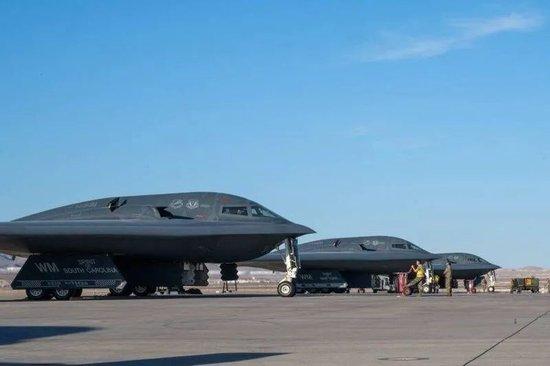

In recent years, the Pentagon has increasingly viewed China as its greatest imaginary adversary. However, it is worth noting that in various exercises directed towards the West Pacific region, the U.S. military’s preparations for a potential large-scale conflict between China and the United States have become more meticulous. In essence, what can be summarized is that the U.S. military is genuinely preparing for an eventuality that could begin on the 1st of June, marking a two-week, unprecedented “Troops Return to the Pacific” exercise. During this period, new operational concepts such as those involving aircraft carrier strikes and air-to-air refueling will be deployed alongside nearly 400 fighter jets and thousands of personnel across different theaters.
This exercise, specifically tailored by the U.S. Air Force for a major conflict between China and the United States in the Western Pacific, is designed to address the vulnerability of U.S. bases in the first and second lines of defense against the Chinese Communist Army’s superior long-range firepower. To avoid concentrated deployment of U.S. Air Force fighters at these few major bases, they are being scattered into smaller groups consisting of fighter jets and transport aircraft equipped with essential equipment, weapons, and fuel, which will then be dispatched to remote islands. Additionally, there is a need to address the rapid deployment and overall coordination capabilities of these dispersed units, allowing them to quickly regroup from different locations and reform into larger formations when necessary.
According to the “Air Force & Space Force Magazine,” the exercise will focus on flexible tactical maneuvering, requiring participants to quickly adapt to changing scenarios and coordinate real-time. The content of the exercise includes: U.S. and allied fighter jet squadrons, including fifth-generation fighters, engaging in complex threats in disputed airspace; transport aircraft forces delivering supplies under adverse conditions and tight schedules; and command and control teams using battlefield management skills to guide complex, coordinated operations across vast areas.
“Exercise B-2 stealth bomber formation
Meanwhile, conducting such a large-scale operation in the vast expanse of the Western Pacific region places high demands on the aviation range of fighter jets, especially those that take off from the second island chain. They need to be air-refueled to “approach China’s surrounding combat zone.” In response, the U.S. Air Force has recently reinstated a series of large-scale exercises, deploying dozens of refueling aircraft to practice how to coordinate complex air refueling operations among large groups of aircraft.
Additionally, the “Protector Sword” exercise, led by the United States and Australia, is scheduled for
today, with a total force participation reaching
high levels of logistical and support capabilities required in high-conflict environments. According to “Defense News,” General Ronald Clark, Commander of the U.S. Pacific Army, stated that the Pentagon believes it would be difficult for the U.S. military to ensure the ability to utilize strategic air power effectively in the battlefield once a crisis or conflict erupts in the area, thus necessitating the establishment of bases in the first island chain and its vicinity to reduce reliance on strategic air power. He mentioned that these bases must have port facilities to facilitate the docking of large vessels carrying a significant amount of supplies, while also needing necessary facilities for aircraft takeoff and landing to facilitate rapid material transportation.
From these large-scale exercises by the U.S. military, it is evident that despite the Middle East conflict drawing considerable attention to the Pentagon, the Western Pacific remains the focus of U.S. deployments. The Pentagon believes that compared to other regions, the U.S. military might encounter certain tactics unsuitable for use in the Western Pacific, necessitating exploration of new operational concepts suitable for future confrontations between the U.S. and China through these exercises. For our observations regarding these developments, we must remain highly vigilant.
Of course, it’s important to note that the preparations of the US military are not always as effective—for example, during a recent exercise, the US Air Force discovered that while air-to-air combat aircraft deployed in scattered locations had more opportunities to evade enemy attacks, they were also significantly more prone to being grounded due to a lack of maintenance equipment and spare parts. These issues could be easily addressed at large air bases equipped with complete facilities.